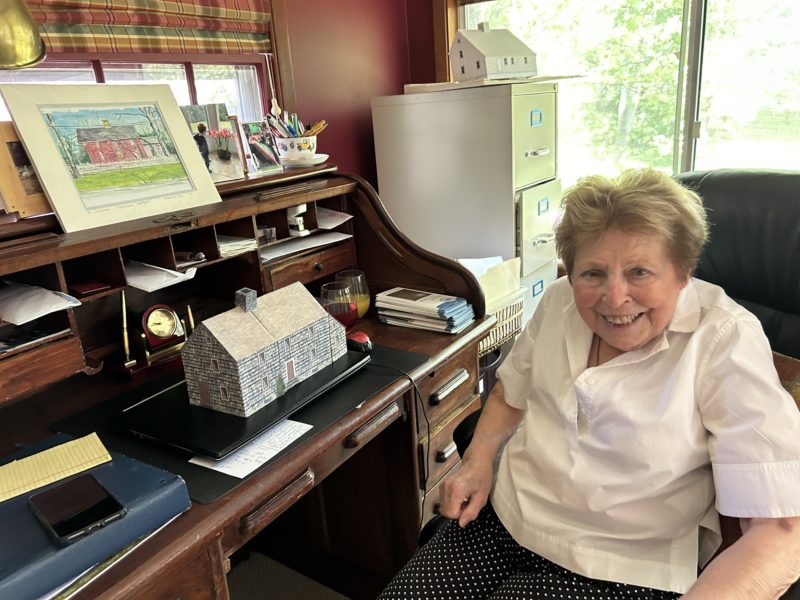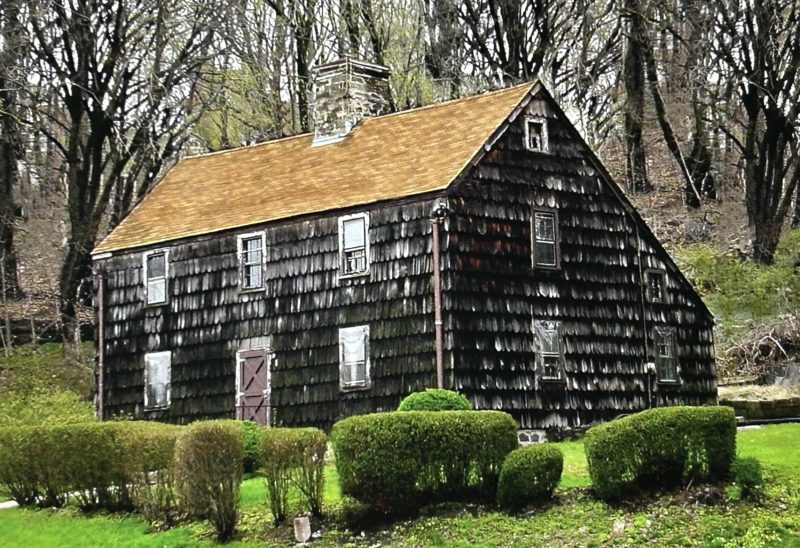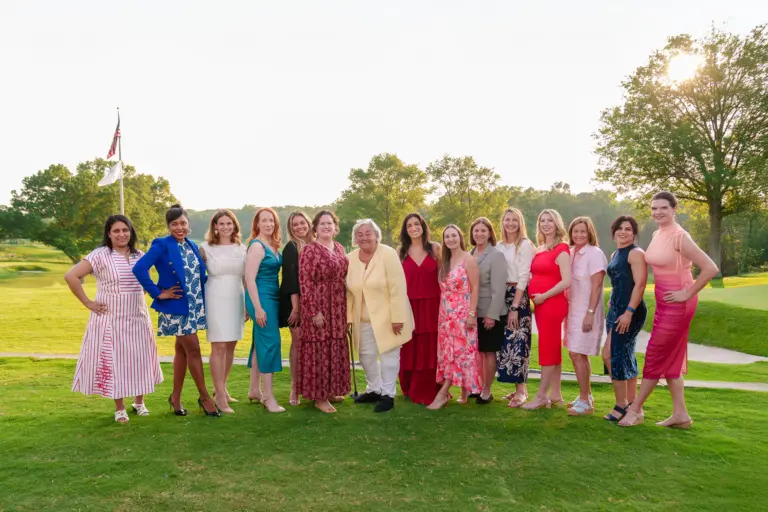
By Anne W. Semmes
For decades Josephine “Jo” Conboy has been dedicated to the protection and preservation of her hometown of Greenwich. For all she has accomplished she is being celebrated on June 9 by the organization she founded in 2008, the Greenwich Preservation Trust (GPT). Fittingly, she will be presented with the annual Trust’s Preservation Leadership Award at “Stoneybrooke,” the first property in Greenwich to be deemed a Local History Property.
The trigger for Conboy’s founding the Trust was the Thomas Lyon House, a small but most historical house that first greets drivers on the right when passing into Connecticut and Greenwich from the south on Route 1, the Post Road. With help from the town’s Conservation Commission documenting the house as the oldest unaltered colonial house in Greenwich dating to about 1695, Conboy and supporters saved the house from demolition in 2006, with the Trust founded two years later.
In the years following Conboy has continued to fight for the preservation, restoration, and proper placement of the Thomas Lyon house, moved once across the roadway with the widening of Route 1. Now designated as on the Connecticut Freedom Trail with GPT’s help and cited as one of the seven most studied homes in the state, Conboy continues to advocate it being moved to a more people-friendly site in Byram.
“Indefatigable! Such a force!” is how Elise Hillman Green describes Conboy’s ongoing efforts. “Jo has always fought for what is right. Jo and GPT have continuously spoken up for the little Thomas Lyon House – its place in Town history, its right to be noticed and its right to exist! We should welcome and honor those who are passionate about a cause.”
It was Green’s mother Sandra Hillman who embraced historic house preservation that would lead to her house Stoneybrooke becoming the first privately owned Local History Property. And Conboy would proceed to protect the Little Bethel AME Church on Lake Avenue across from Greenwich Hospital as the first African American Church in Greenwich.
Conboy’s partial wins have included saving the actual first floor of the historic Ernest Thompson Seton House in Cos Cob with an informative plaque and placing preservation easements on the Greenwich Main Post Office building. With its retained Classical Revival architecture now housing Restoration Hardware, it was listed on the National Register of Historic Places in 1986.
But less known are Conboy’s earlier and critical preservation/protection efforts in Greenwich. Prior to creating her community based Save Our Shores in 1984 she was a whistle blower first concerning a waste station to be built in her Belle Haven neighborhood. “So, the waste station was going to be on the edge of the water,” she told, and “We got them to build a smaller one – we prevented a lot of pollution.”
And then came the discovery of pollutants from the composting of leaves using wastewater by a wastewater plant near the top of an inlet called Tom’s Brook on Byram Shore Road. “It was highly contaminated,” she said. “A lot of people were suffering from sinuses, from aspergillus spores in the air. So, with a local action group, we had it shut down, with DEEP.”
Then, with Save Our Shores in place, there was that sewage being found on Byram Park Beach, and “sewage was coming up on the streets every time it rained,” said Conboy, “so we reported it to the Environmental Protection Agency, and an organization called Save the Sound sued the Town. The sewers all over the town needed to be renovated – they were over a hundred years old.”
With the struggle to save the Thomas Lyon House ongoing, the Greenwich Preservation Trust efforts would more recently put its efforts again successfully to stopping a development plan in the historic neighborhood of the Fourth Ward. “They were going to knock down five architecturally historic homes in Sherwood Place,” told Conboy. “That was a major accomplishment.”

But not successful was an effort to stop the teardown of the historic Sam Pryor house with its thatched roof on Field Point Circle. “We tried,” she said. “It hurts sometimes with some of the owners. We would sit down, tell them about the history, and they still wanted to knock it down. They knock them down for these brand-new infrastructures. They think it’s going to be greater,” bur for Conboy, “an older house is better.”
Preserving the Town’s colonial land records was another achievement. “You’d pick up a book, and it would disintegrate slowly,” tells Conboy. Reaching out to the Town Clerk Carmella Budkins, “She looked and said these records have to be preserved,” and Budkins would appoint a committee to protect those records. Long story short, those records are being carefully preserved.
Another meaningful accomplishment has been to recognize and protect the Thomas Lyon Cemetery on Byram Shore Road, that is located in the southern part of a three-cemetery Old Burying Ground. And there are a number of Lyons in the headstones dating back hundreds of years. Conboy also brought attention to a section of the cemetery with no headstones historically known as the Colored Cemetery.
“Jo has been an indefatigable leader and organizer, says GPT co-chair Paul Pugliese, “focusing attention and restoration of the colonial African American cemetery in Byram and state historic designation and signage for the Bethel AME church historic designation. Over the years she has met with various owners of historic properties in Town to persuade them to preserve rather than demolish, as an advocate for retaining Greenwich’s history and character, for future generations.”
Conboy tells that as of today she has stepped down as GPT chairman. “You have to run around a lot if you really want to do the job right – you have to research. And Paul Pugliese is taking the mantle now as chairman. He’s doing all the work now. And he’s a great chairman, with Andrew Melillo as cochair. You need two people. We have a great board with people who have done great things for us. I hope it keeps going.”
So, just how far back does Conboy’s interest in preservation go? It begins in Brooklyn where she lived as a child with her family. “My father bought this beautiful antique Victorian house. And I fell in love with it. You can do so much with them and save them, and learn their culture, the way we lived in them, and all the history behind it. We are going to make preservation a household word just as the word environment has become.”




